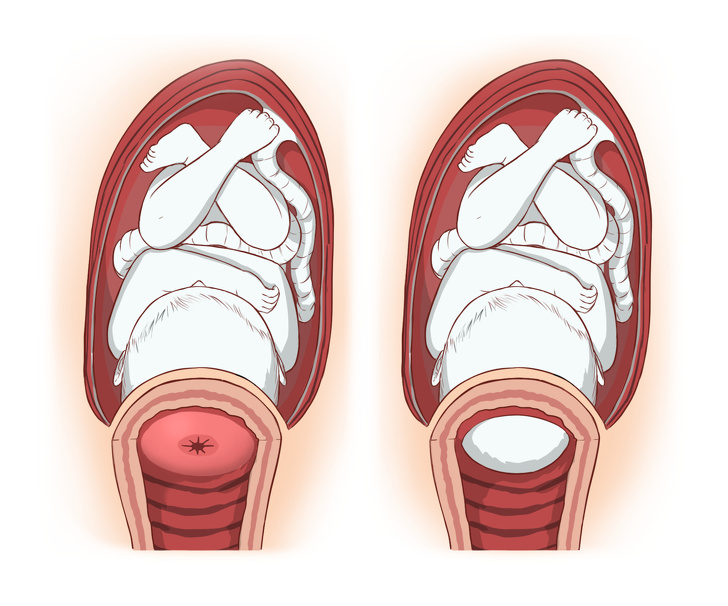
How to recognize Early signs of Labor?
January 28, 2020Many moms to be are familiar with their pregnancy and development of the baby. But, research has discovered that most of them are failing to recognize the earliest signs of labor. To be fair, it is very easy to oversee the early symptoms since at the end of the pregnancy some pain is somewhat normal, as is stretching and cramping. You wouldn’t believe how many women turn to the internet for help, and precisely because of that we are listing early signs that you are definitely mean you are going to have a baby.
1. Baby has dropped and lays very low

Image source: avawomen.com
As the due date is approaching the baby will slowly make its way down and lay lower and lower as every day passes. From 36 weeks of pregnancy and on pay attention to where the baby is making pressure. If you notice the changes in where the baby is laying and that it is no longer making pressure to your rib cage, rather on the pelvis and lowest part of your abdomen, know that the time has come.
2. Contractions
I know that this one is very obvious, but trust me when I say, I know a lot of women that didn’t know that they have contractions since there was no excruciating pain, since the modern age and all TV shows have though us that this has to hurt. Yes, Braxton Hicks are present throughout the pregnancy and they are sort of a practice for the real deal. During the last weeks of your pregnancy, you will begin to notice contractions that are stronger and might trigger some pain receptors. If this happens, pay close attention to the time between two contractions and the length of a contraction itself. If they are irregular, wait a little longer, but if the contractions are 5 minutes apart take your mommy bag and go straight to the hospital.
3. Cervix has changed

Image source: bloomlife.com
This part of the body is made from a lot of round muscles, and its main job during pregnancy is to keep the baby in one place and prevent anything from the lower reproductive tract crawl up to the baby. Once the birthday is getting close, some changes will occur. The first one is that it will become tenderer, this is because the baby needs to pass through it, so muscles and tissues are slowly preparing to prevent any damage of both mom and a newborn.
Since this part of the body was very tightly closed, a few weeks before labor it will slowly start to open up. Your healthcare provider will check it on every appointment so it can track the dilation; it’s normal to be a bit opened and your doctor will tell you if you need to rest to prevent it from opening up before time. Since the baby’s head will lie on top of it, most definitely you will feel it pushing and rubbing on it. If so, slowly go to the closest medical center.
I know that it is scary to go to the hospital thinking you are going into labor and then just being sent home due to a false alarm. Luckily, the internet is here. We all know that a googling symptom is not the smartest thing to do, but, let’s face it, we all did it and we will again. In these moments it is essential to have a trustworthy website to go to and check your symptoms, one of the best is YourDoctors.Online, since it employs real doctors and not an Artificial intelligence interface to assume the matter.
4. Nesting
We all did this before our period, right, and this urge to clean the house to be perfect. It is considered as one of the evolutionary relicts and it does make sense; you want everything to be perfect for your little one. This nesting sensation is pretty common during the entire pregnancy but if it takes out of control, you are getting close to meeting your little one.
5. “Bloody show”

Image source: brightside.me
This is one of the shows no one wants to see, right? Again, stigma is real with this one and I know a lot of women expect it to be a river of blood like from the horror movie. But, this is not the case, this phenomenon follows the loss of the mucus plug, of course, that in the mucus will be some blood, but it is not what you think. It will resemble a spotting rather than a full-on bleed and it will be colored in red, brown or even pink. Also, it can be passed all at the same time or slowly flow for a few days.
6. Water brakes
Okay, this one is more than obvious but again filled with misconceptions. True, for some it will look like an enormous amount of fluid just rushed down the legs, but for most, it can appear as uncontrolled bladder or like a bit more mucus just exited. I know women that slowly lost their water for hours and had no idea since it wasn’t as in the movies. After the fluid starts to flow contractions follow. Nevertheless, if you feel like you have peed yourself (I know it sounds gross) or like you are constantly wet seek medical attention. Your loved one is on its way.
Conclusion
These symptoms vary from women to women, some experience no pain at all, and others feel a lot of it. Some never have their water brake at home, but they do it once in the hospital on the hospital table. It is good to know the symptoms, but also to know who to ask when in doubt.
Going into labor can be scary, and when it comes to that moment it is essential to remember to breathe and stay as calm as possible. Giving birth is one of the most incredible moments in nature, and your body is well equipped to do this job. Trust your instincts, trust your own body and patiently wait to meet your new family member.


